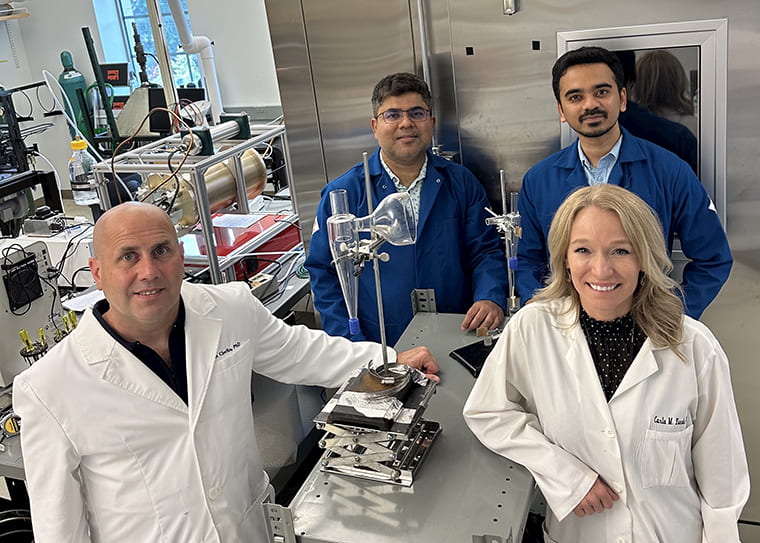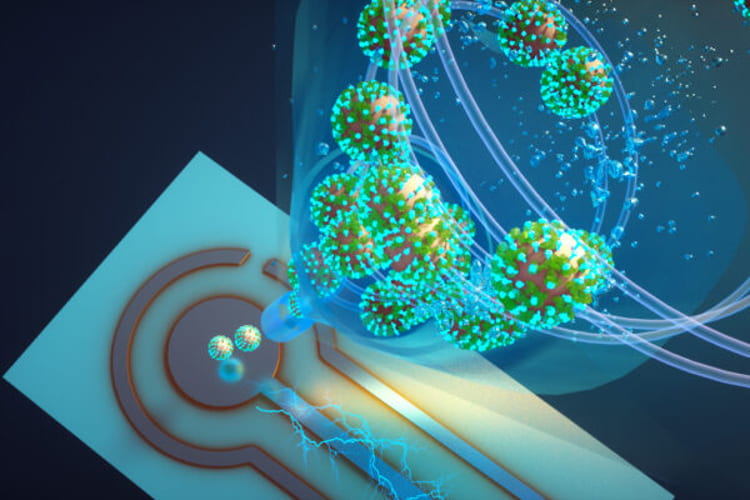Now that the emergency phase of the COVID-19 pandemic has ended, scientists are looking at ways to surveil indoor environments in real time for viruses. By combining recent advances in aerosol sampling technology and an ultrasensitive biosensing technique, researchers at Washington University in St. Louis have created a real-time monitor that can detect any of the SARS-CoV-2 virus variants in a room in about 5 minutes.
The inexpensive, proof-of-concept device could be used in hospitals and health care facilities, schools and public places to help detect CoV-2 and potentially monitor for other respiratory virus aerosols, such as influenza and respiratory syncytial virus (RSV). Results of their work on the monitor, which they say is the most sensitive detector available, are published July 10 in Nature Communications.
The interdisciplinary team of researchers from the McKelvey School of Engineering and the School of Medicine consists of Rajan Chakrabarty, PhD, the Harold D. Jolley Career Development Associate Professor of energy, environmental & chemical engineering in McKelvey Engineering; Joseph Puthussery, a postdoctoral research associate in Chakrabarty’s lab; John Cirrito, PhD, a professor of neurology at the School of Medicine; and Carla Yuede, PhD, an associate professor of psychiatry at the School of Medicine.

“There is nothing at the moment that tells us how safe a room is,” Cirrito said. “If you are in a room with 100 people, you don’t want to find out five days later whether you could be sick or not. The idea with this device is that you can know essentially in real time, or every 5 minutes, if there is a live virus in the air.”
Cirrito and Yuede had previously developed a micro-immunoelectrode (MIE) biosensor that detects amyloid beta as a biomarker for Alzheimer’s disease and wondered if it could be converted into a detector for SARS-CoV-2. They reached out to Chakrabarty, who assembled a team that included Puthussery, who had expertise in building real-time instruments to measure the toxicity of air.
